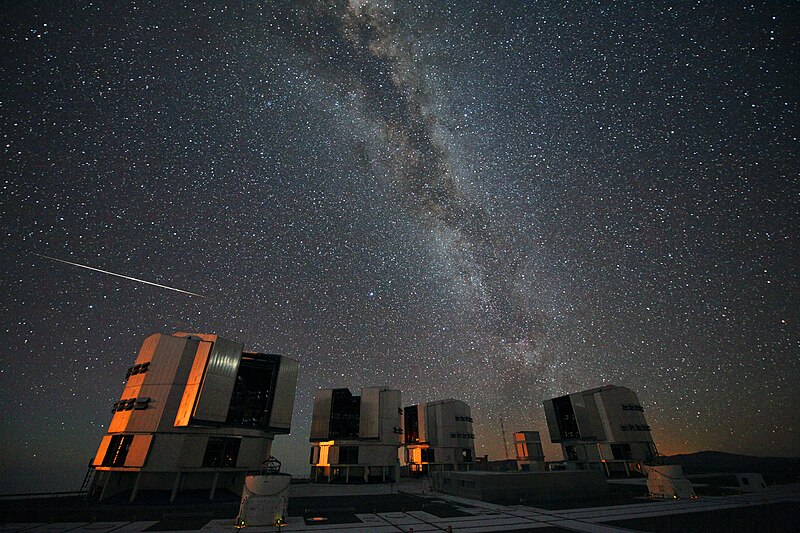Fail:The 2010 Perseids over the VLT.jpg

Saiz pralihat ini: 800 × 533 piksel. Leraian-leraian lain: 320 × 213 piksel | 640 × 427 piksel | 1,024 × 683 piksel | 1,280 × 853 piksel | 2,560 × 1,707 piksel | 5,616 × 3,744 piksel.
Fail asli (5,616 × 3,744 piksel, saiz fail: 5.68 MB, jenis MIME: image/jpeg)
Sejarah fail
Klik pada tarikh/waktu untuk melihat rupa fail tersebut pada waktu itu.
| Tarikh/Waktu | Gambar kenit | Ukuran | Pengguna | Komen | |
|---|---|---|---|---|---|
| semasa | 17:32, 19 Februari 2024 |  | 5,616 × 3,744 (5.68 MB) | C messier | full size |
| 09:34, 18 Ogos 2010 |  | 4,000 × 2,667 (5.82 MB) | Lars Lindberg Christensen | {{Information |Description={{en|1=Every year in mid-August the Perseid meteor shower has its peak. Meteors, colloquially known as “shooting stars”, are caused by pieces of cosmic debris entering Earth’s atmosphere at high velocity, leaving a trail o |
Penggunaan fail
2 buah laman berikut menggunakan fail ini:
Penggunaan fail sejagat
Fail ini digunakan oleh wiki-wiki lain yang berikut:
- Penggunaan di af.wikipedia.org
- Penggunaan di ar.wikipedia.org
- Penggunaan di en.wikipedia.org
- Penggunaan di eo.wikipedia.org
- Penggunaan di es.wikipedia.org
- Penggunaan di fa.wikipedia.org
- Penggunaan di gl.wikipedia.org
- Penggunaan di he.wikipedia.org
- Penggunaan di hr.wikipedia.org
- Penggunaan di hu.wikipedia.org
- Penggunaan di it.wikipedia.org
- Penggunaan di la.wikipedia.org
- Penggunaan di mk.wikipedia.org
- Penggunaan di ml.wikipedia.org
- Penggunaan di my.wikipedia.org
- Penggunaan di nn.wikipedia.org
- Penggunaan di pl.wikipedia.org
- Perseidy
- Portal:Astronomia/Artykuł miesiąca 08 2012
- Portal:Astronomia/Artykuł miesiąca 08 2013
- Portal:Astronomia/Artykuł miesiąca 08 2014
- Portal:Astronomia/Artykuł miesiąca 08 2015
- Portal:Astronomia/Artykuł miesiąca 08 2016
- Portal:Astronomia/Artykuł miesiąca 08 2017
- Portal:Astronomia/Artykuł miesiąca 08 2018
- Portal:Astronomia/Artykuł miesiąca 08 2019
- Portal:Astronomia/Artykuł miesiąca 08 2020
- Portal:Astronomia/Artykuł miesiąca 08 2021
- Portal:Astronomia/Artykuł miesiąca 08 2022
- Penggunaan di ro.wikipedia.org
- Penggunaan di sh.wikipedia.org
- Penggunaan di sk.wikipedia.org
- Penggunaan di sl.wikipedia.org
- Penggunaan di sv.wikipedia.org
- Penggunaan di tr.wikipedia.org
- Penggunaan di vi.wikipedia.org
- Penggunaan di www.wikidata.org
- Penggunaan di zh.wikipedia.org

